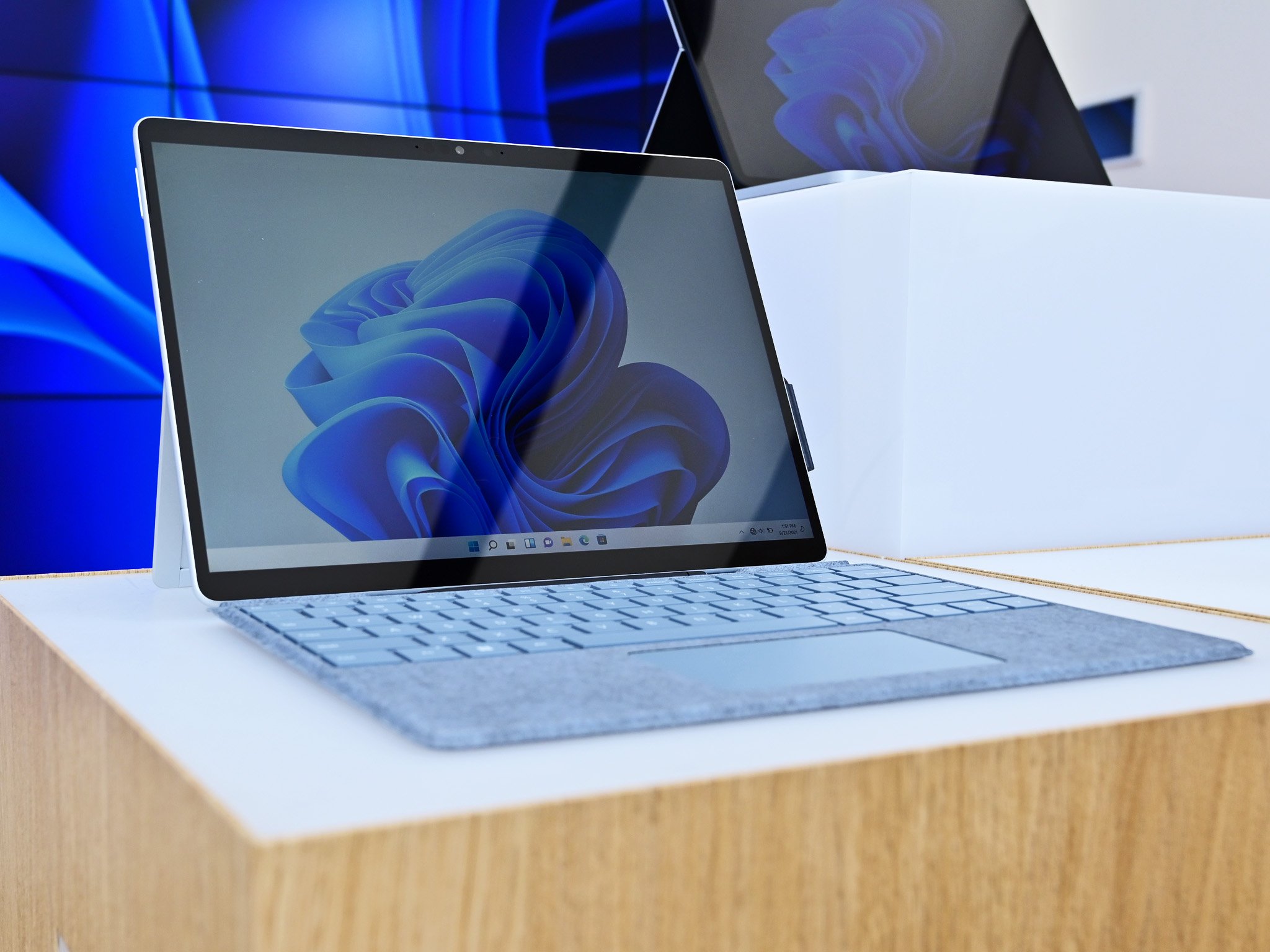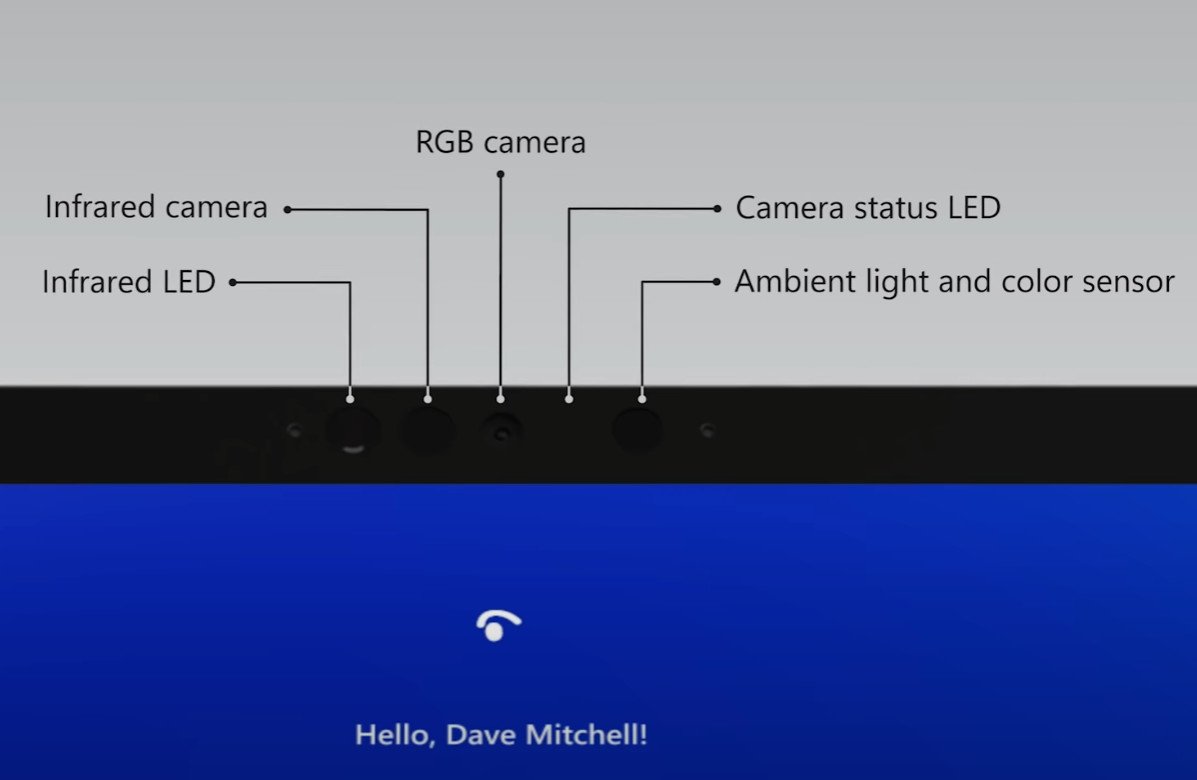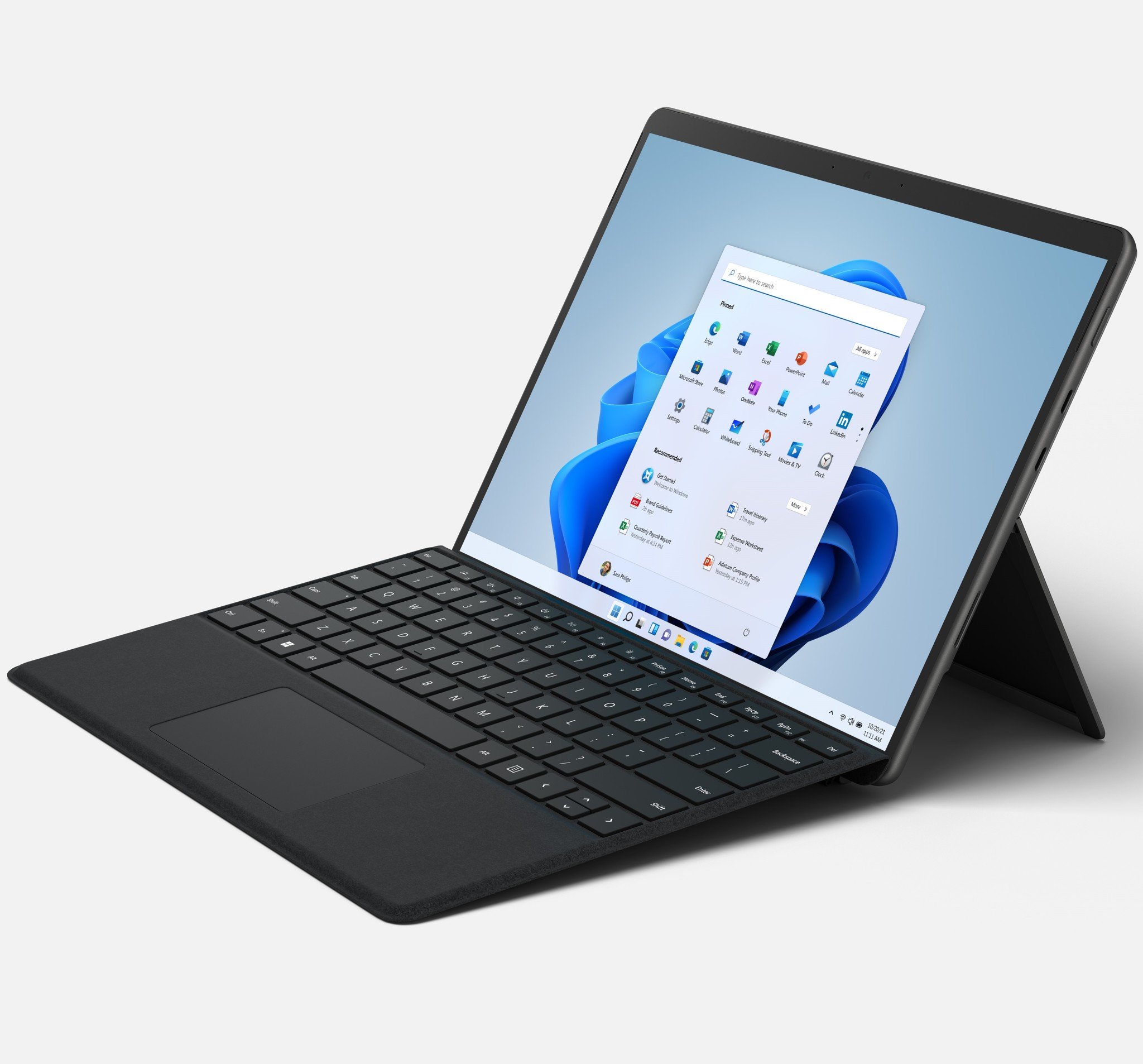Surface Pro 8 has a bigger battery than Pro 7 and faster, more accurate Windows Hello
The latest Microsoft Mechanics deep dive video sheds light on many of the smaller improvements to Surface Pro 8.

What you need to know
- The Surface Pro 8 gets a breakdown in the latest Microsoft Mechanics video.
- Faster Windows Hello, new ambient color sensor, 23-watt TDP, and more were revealed.
- Surface Pro 8 also switches from magnesium to anodized recycled aluminum for the chassis.
- There's also a new carbon composite thermal dissipation system.
The all-new Surface Pro 8 is the first major overhaul to the Surface Pro line since 2014's Surface Pro 3. Besides thinner bezels, Thunderbolt 4, a larger display, and 11th Gen CPU, there are many other more minor changes that weren't mentioned in the press release or product specs announcement.
The latest Microsoft Mechanics video spends a good seven minutes breaking down what's new, and as it turns out, there is quite a lot that you may not have known about.


We've summarized the main points below, but it's worth watching the video yourself to have it all explained:
- Modern, rounded chassis "compliments the fluid UI design of Windows 11"
- The thinner bezels expand the display real estate by 11%
- The chassis is made from recycled aluminum instead of magnesium
- Both "classic" Platinum and Graphite Pro colorways are anodized
- First Surface display with ambient color sensor to dynamically adjust display colors based on room lighting
- Display brightness peaks at 450 nits and goes down to just two nits
- 120Hz display makes pen latency "seemingly undetectable"
- The IR camera has been improved "substantially" in terms of speed and accuracy
- Microsoft's AI platform lets Windows Hello dynamically adapts to changes in your appearance with glasses or changes in facial hair
- The 5MP full HD RGB camera has larger 1.4-micron pixels for better low-light performance
- The camera also has tuning optimizations to keep your face in focus and lighting exposure more consistent
- Dolby Vision (HDR) and Dolby Atmos (surround sound) enhance the multimedia experience
- Surface Pro 8 supports up to 23-watt TDP for the 11th Gen Intel processor, a "first for the Pro line"
- You can get LTE in Core i3 and Core i7 models for the first time (Commercial markets)
- Battery has increased to 50.4 WHr up from 43.2 WHr (Surface Pro 7+ is also 50.4WHr, but Surface Pro 7 is 43.2)
- Uses new carbon composite thermal dissipation system: Vapor chamber, three heat pipes, and three graphite spreaders
- Improved perimeter venting
- 46% faster compute and 75% boost to graphics processing compared to Surface Pro 7
That's a lot of stuff for Surface Pro 8, which goes to show you that what makes a PC "great" is more than just the name on the processor.
We'll keep all these changes in mind when we do our Surface Pro 8 review sometime in October to see how much of a difference it really makes. You can get more of an idea of how Surface Pro 8 compares to Surface Pro 7 to hold you over for now or go deeper on those new 11th Gen processors.
| SKU | Price |
|---|---|
| Intel Core i5, 8GB RAM, 128GB Storage | $1,099.99 |
| Intel Core i5, 8GB RAM, 256GB Storage | $1,199.99 |
| Intel Core i5, 8GB RAM, 512GB Storage | $1,399.99 |
| Intel Core i5, 16GB RAM, 256GB Storage | $1,399.99 |
| Intel Core i7, 16GB RAM, 256GB Storage | $1,599.99 |
| Intel Core i7, 16GB RAM, 512GB Storage | $1,899.99 |
| Intel Core i7, 16GB RAM, 1TB Storage | $2,199.99 |
| Intel Core i7, 32GBR AM, 1TB Storage | $2,599.99 |
Surface Pro 8 is expected to begin shipping on October 5 in the following markets:
- United States
- United Kingdom
- Canada
- Austria
- Germany
- Ireland
- Switzerland
- France
- Japan

Updated design, same 2-in-1 form factor.
The Surface Pro 8 finally adopts the modern design that Microsoft first introduced with Surface Pro X, now with two USB-C ports that are Thunderbolt 4 enabled, an upgraded 13-inch display with a high-refresh rate of 120Hz, and support for the Surface Pro X style Type Covers with the Slim Pen charging cradle.
All the latest news, reviews, and guides for Windows and Xbox diehards.

Daniel Rubino is the Editor-in-chief of Windows Central. He is also the head reviewer, podcast co-host, and analyst. He has been covering Microsoft since 2007 when this site was called WMExperts (and later Windows Phone Central). His interests include Windows, laptops, next-gen computing, and wearable tech. He has reviewed laptops for over 10 years and is particularly fond of 2-in-1 convertibles, Arm64 processors, new form factors, and thin-and-light PCs. Before all this tech stuff, he worked on a Ph.D. in linguistics, performed polysomnographs in NYC, and was a motion-picture operator for 17 years.

